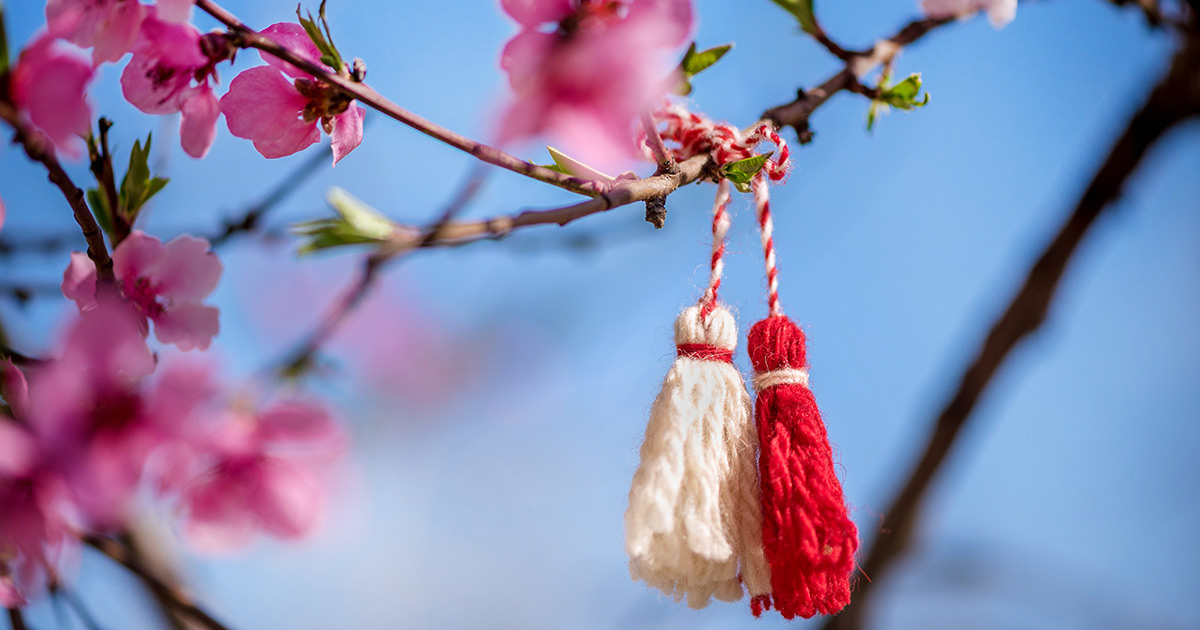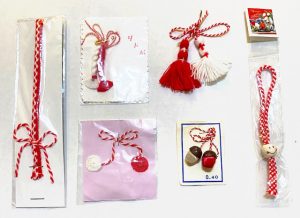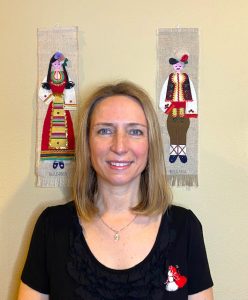
Celebrating Baba Marta (or “Grandma March”) on March 1 is an important part of Bulgarian culture. The folklore figure, “Baba Marta” symbolizes the beginning of spring. Bulgarians celebrate the Baba Marta holiday by wearing martenitsi – ornaments traditionally made of yarn, however, in modern times, they can be made of other sewing materials.
Martenitsi come in different designs, shapes, and sizes, but they all have one thing in common: their color. Martenitsi must be red and white as those colors symbolize health and life (red) and happiness and purity (white). Bulgarians pin a martenitsa to their clothing and wear it until they see a stork, swallow, or blossoming tree, signifying the beginning of spring. At that point, sometime in March, the ritual is to remove your martenitsa and tie it to a nearby tree or bush.
I remember celebrating Baba Marta fondly while growing up. While people of all ages celebrate the holiday, kids seem to enjoy it the most. Friends and relatives gift each other martenitsi, and everyone looks forward to seeing which kind they will receive. Kids in school often compete to see who will get the most in number or the most interesting ones. A traditional example is two dolls, a white male and a red female named Pizho and Penda. My personal favorite was made of two cottony balls because they were so soft to the touch.
These days, martenitsi are more elaborate and have even branched out into friendship bracelets. Very crafty people can thread their name inside the bracelet, all done with only red and white interwoven strings.
I moved to the United States 29 years ago. Here, I always honor Baba Marta by wearing martenitsa, although I don’t participate in an exchange since the Bulgarian communities here are small and far apart. I taught my kids about the holiday, and they always wear a martenitsa on March 1. They actually look forward to having them pinned on their coats. When my kids were students at Grand Ridge Elementary, other kids would ask them about their “white and red things” and my kids would tell them about the holiday. I always showcased Baba Marta as part of Grand Ridge Elementary’s Cultural Club and Cultural Fair, and students would get to make martenitsi. I feel like more people, especially kids, in Issaquah Highlands know about Baba Marta because the people here are so curious, accepting, and inclusive.
This March, if you see someone wearing a red and white ornament or notice a red and white ornament on a tree in Issaquah Highlands, it is safe to assume a Bulgarian walked down that path. Now you will know the tradition behind them and can connect them to a country that is more than 1,300 years old, has less than seven million people, and has unmeasurable hospitality.
CHESTITA BABA MARTA! (Happy Granny March Day!)
Adriana Stamenova is a Daphne Park resident.







